Cooling system and backplate
The total of 24 MOSFETS of the eight phases of the GPU supply lie under a passive cooler, which is to be cooled by the air flow from above. What went wrong with the GTX 1080 works amazingly here.
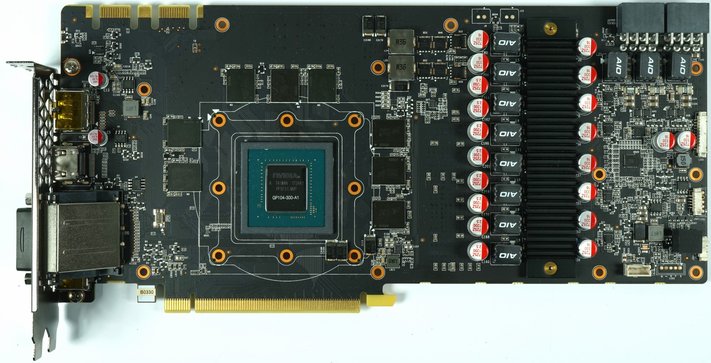
We will see why this is the case. Hear. This very spartan cooler needs one thing above all: a decent air flow.

| Cooling system at a glance | |
|---|---|
| Type of cooler: | Air |
| Heatsink: | Copper heat sink for the GPU Memory cooling (modules, voltage converters) via mounting frame on the heat sink |
| Cooling fins: | Aluminum, horizontal alignment related |
| Heatpipes | 4x 8 mm, 2x 6 mm, copper composite |
| VRM cooling: | GPU VRM over small, passive rib heatsinks Storage VRM indirectly via cooling frame |
| RAM cooling | via mounting frame and indirectly via the heatsink |
| Fan: | 3x 9.2 cm fan modules (8.7 cm rotor diameter) 9 rotor blades each fixed minimum speed (39%) no semi-passive regulation |
| Backplate | Aluminum no cooling function, foiled inside RGB Effects |
Zotac relies on a solid copper heat sink, four 8 mm and two 6 mm heat pipes made of copper composite material as well as on a large base plate made of aluminium, which simultaneously the memory modules and the two voltage converter phases for the storage Cools.
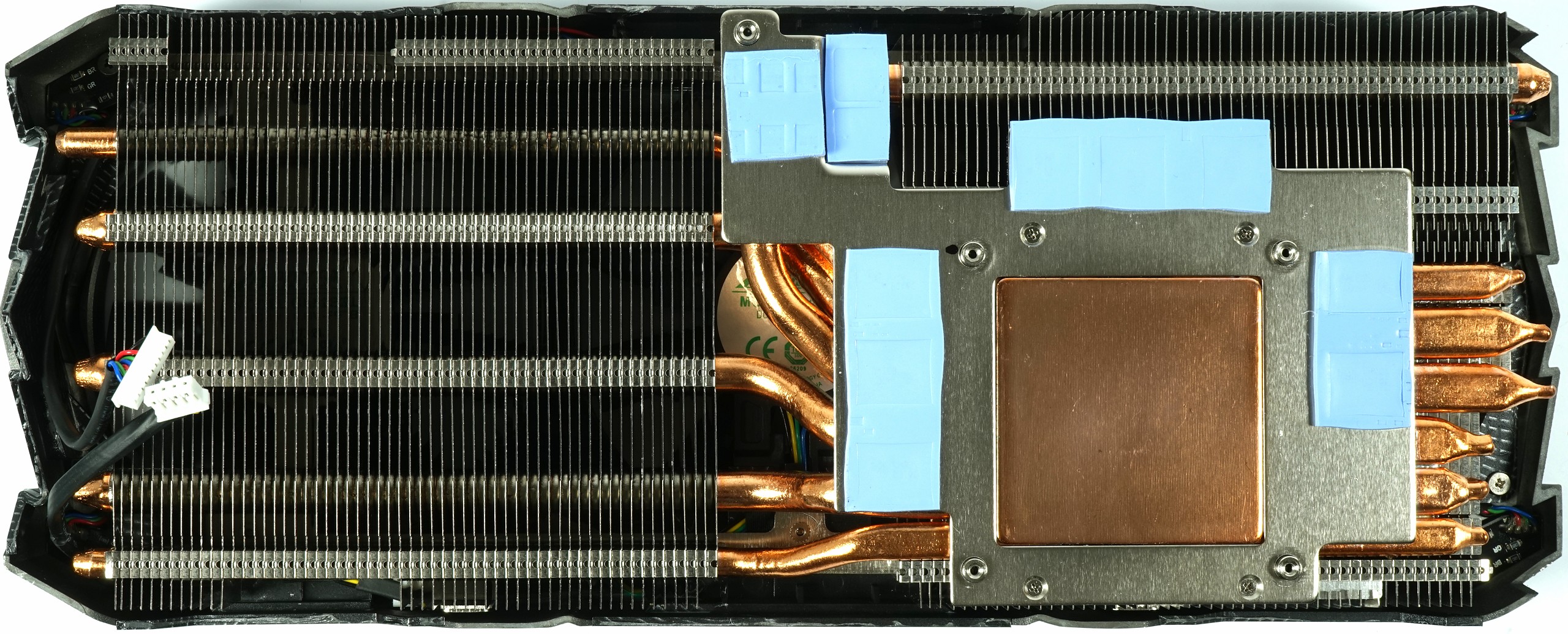
Fan curves and noise emission ("volume")
The fan curves show ruthlessly that Zotac has completely squandered itself here. Instead of a semi-passive control, which was, however, on the Zotac GTX 1080 Amp! Extreme also didn't really work, this time you bet on a much too high set minimum speed of 39%, which is well over 1250 rpm and is therefore even higher than with the GTX 1080 under longer full load in the closed housing!
When asked by Zotac, we received the following explanation:
The 39% fan percentage minimum was a requirement from NVIDIA… The card doesn't support semi-passive mode because we didn't have enough time to implement the new version of Fan stop. So rather then using the original version of fan stop which did not work as well, we decided to remove it.
Well, let's hope for an improved BIOS, that then also nvidia's Green Light program for a release.
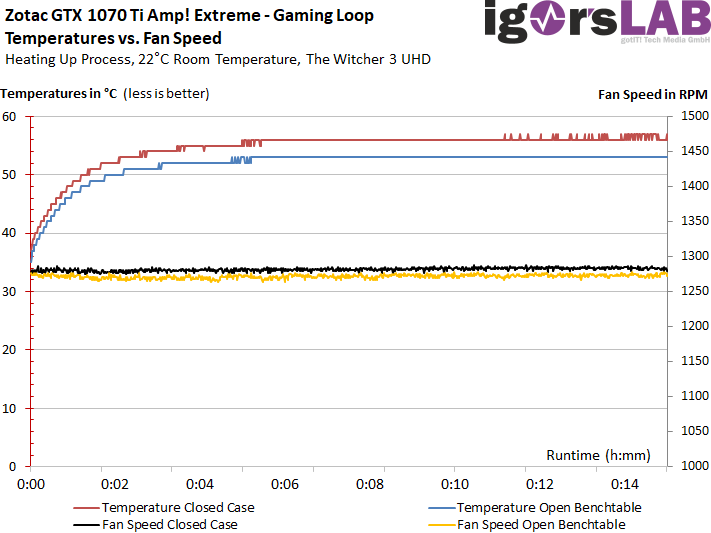
The whole thing doesn't look much different with the stress test. In summary, it can be said that despite three fans, the card is acoustically already a daredevil, in which no further speed changes take place even under load. In this form, this is really rather meaningless, unfortunately.
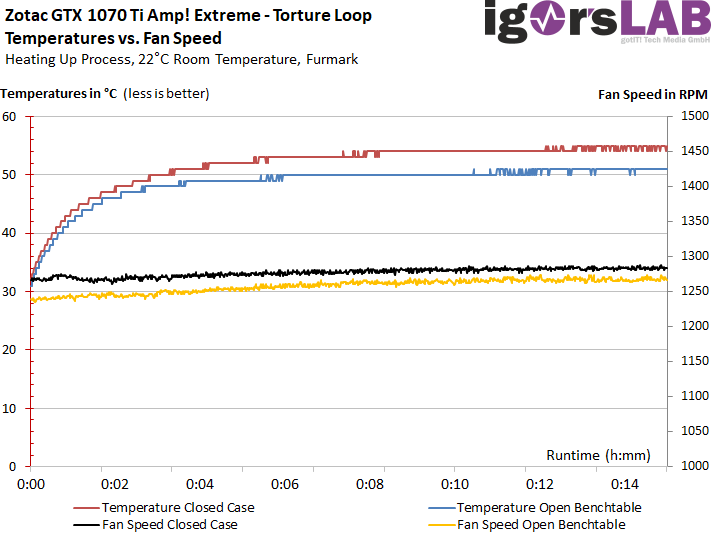
There would be enough reserves to let the fans rotate a little slower, at least in the idle, to get the card quieter.
| Measurements for fans and noise emission |
|
|---|---|
| Fan speeds Open Benchtable Maximum |
1282 rpm |
| Fan speeds Open Benchtable Average |
1274 rpm |
| Fan Speeds Closed Case Maximum | 1296 rpm |
| Fan Speeds Closed Case Average | 1282 rpm |
| Noise emission (air) Maximum |
40.1 dB(A) |
| Noise Emission (Air) Average |
39.7 dB(A) |
| Noise Emission (Air) Idle | 39.2 dB(A) |
| Sound characteristic / Hearing impression |
hardly lower frequency bearing noises easily audible engine noise< 1 Hz Air/destruction noise light voltage transformer noises |
To illustrate our subjective audio impression once again, we now have a high-resolution graphic with the complete frequency spectrum of our laboratory measurement:
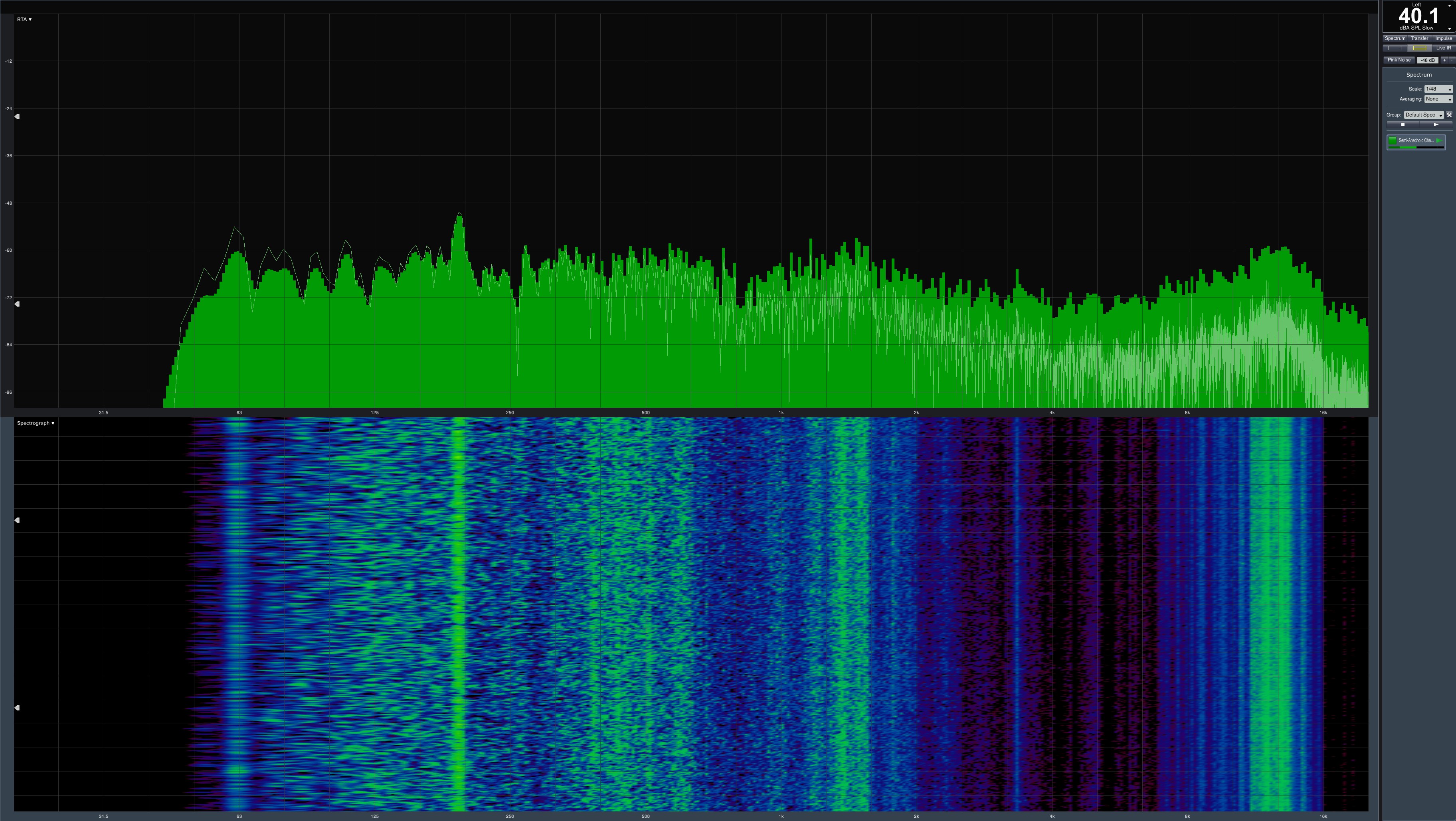
The almost 40 dB(A) are also not a brilliant performance in the Idle and therefore call into question the complete card. Did Zotac just not want to complete this (apparently unloved) GTX 1070 Ti? I don't think we'll ever know.
































Kommentieren